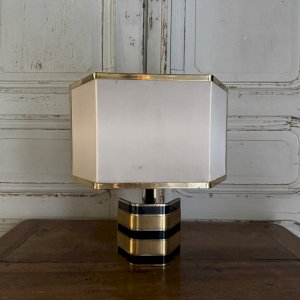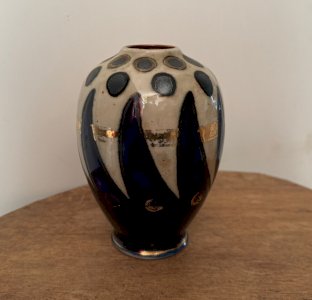- Sell Now
- Home
-
FURNISH
All STORAGE FURNITURE • Wardrobe • Chests of drawers, Chiffonnier • Sideboard • Shelves, Bookshelves • File cabinet • Sewing Furniture • Bar cabinet • TV Stand • Trunk, Chest TABLE & BEDSIDE TABLE • Dinner Table • Coffee table, side table, end table & Bedside • Console, Pedestal table & Selette • Serving Table, Trolley • Card Table • Draper's counter & table SEAT • Sofa • Armchair • Chair • Stool • Bench • Daybed • Beanbag & Footrest • Deckchair & Outdoor DESK, SECRETARY, DRESSING TABLE GARDEN LOUNGE BEDDING • Bed • Bedhead • Cradle, Moses basket CRAFT FURNITURE, WORKSHOP • Workbench • Stool, Ladder, Step • Easel & Trestle SCREEN PIANO
-
DECORATE
All TO PUT • Sculpture, Statuette • Vase & Planter • Dame Jeanne, Bonbonne & Flacon • Bridal globe, Dome • Pin tray, Ashtray • Candlestick & Candle • Photo frame • Stone, Fossil, Mineral • Earth Globe MIRROR WALL DECORATION • Painting • Engraving & Illustration • Poster • Tapestry • Wall Frame • Plate & Sign • Juju Hat & Wall Paniel • Mask • Hunting Trophy • Other object to hang CLOCK, PENDULUM & ALARM CLOCK ARRANGEMENT • Jar, Box & Case • Basket, Wastebasket & Crates • Magazine Rack & Vinyl Holder • Display & Spinner • Coat hook & Coat rack • Furniture Valet & Mannequin • Towel Holder • Suitcase & Travel Bag • Bottle Rack • Umbrella holder BATHROOM OFFICE • Mail holder • Bookends • Sulphide & Paperweight • Stationery FIREPLACE ACCESSORIES HOBBIES • Vintage Sport • Music • Vintage device • Smoking Item • Militaria, Ancient weapon • Miniature Vehicle • Game, Playing Cards • Collection object & Curiosity BIRD CAGE RELIGION, SPIRITUALITY
- TEXTURE
- ILLUMINATE
-
ACCOMODATE
All TABLE & SERVING • Plate • Silverware • Knife Holder • Glass • Bowl, Mug, Cup • Bowl, Ramekin & Cup • Dish, Cup & Salad Bowl • Tray, Basket & Server • Table Mat • Pitcher, Carafe, Bottle, Tea & Coffee Jug • Ice Bucket • Salt & Pepper shakers, Oil & Vinegar shakers • Sugar and jam maker • Gravy boat • Butter dish • Egg cup • Terrine OLD BALANCE CUTTING BOARD GRINDER CASSEROLE, SAUCEPAN & PAN KITCHEN UTENSIL & ACCESSORY
- TINKER
- KIDS
- Jewelry & Accessories
Login
Related Products
Description
RELIGIOUS SUBJECT WOODEN STATUE JESUS MARIE Exceptional PIETA or VIRGIN OF MERCY in carved polychromed wood, dating from the 17th century. Probably representing Jesus and Mary. You notice the differences in colors in chocolate and golden tones. The whole is finely made, the workmanship of Jesus' hair is very detailed. It rests on its wooden terrace there is a niche which was probably used to receive a reliquary. You will notice gaps, chips and cracks on the statue. We sell it as presented Sold as is. Not cleaned. For the state thank you for detailing the photos. HISTORY OF PIETA This Christian theme of suffering and death is the first expressed after the episodes of the Passion of Christ, before his Resurrection. It was in force between the years 1350-1500 (fourteenth and fifteenth centuries) very marked by serious periods of epidemics and pandemics of the black plague. It complements other themes of Madonna, or "Virgin and Child", more traditionally inscribed in the infancy of Jesus. Strictly, the theme should include, in its representation, only two of the characters in the chronology of the Life of Christ: himself dead and Mary his grieving mother. As in many other sacred representations, certain figures (of the saints, the donor or the sponsor) can "anachronically" witness the scene as can also be seen in the Sacred Conversations.HISTORY OF POLYCROMIEColychrome ceramic of the sixteenth century by Santi Buglioni at the Sanctuary of La Verna Christian artists of the Middle Ages also sometimes took advantage of polychromy, especially during the Romanesque period and the first centuries of the Gothic period.During the first centuries of the Christian era, it was commonly accepted that churches should be fully painted inside, and architectural painting reached its peak in the 12th century in France. Before this time, the paint was applied either on the stone itself, or in fresco on a plaster covering the masonry walls. This type of decoration was perfected under the influence of Byzantine artists who came to France in the ninth century. The dominant colors are then yellow ocher, light red brown, green, purple pink, light purple violet, light blue and gold for shine. Stained glass windows from medieval times and painted wooden statues (see painting on wood) must also be regarded as a particular form of polychromy. The patterns of the ornamentation take on an extreme variety. Exterior painting of architecture was renounced from the sixteenth century. During the Renaissance, polychromy was still practiced and was expressed through enamelled terracotta ceramics (terracotta invetriata) by several renowned Tuscan artists such as Luca della Robbia , Andrea della Robbia then all the members of the Della Robbia workshop, Santi Buglioni. The heyday of baroque and rococo will continue to consecrate polychromy in sculpture.The photos are an integral part of the description.Dimensions: Height: 31 cmWidth: 21 cmLength: 11cm Jereste at your disposal for any questions.
Réf :
#17561
Color(s) : Golden
Material : Wood
Comments
Related Products
Description
RELIGIOUS SUBJECT WOODEN STATUE JESUS MARIE Exceptional PIETA or VIRGIN OF MERCY in carved polychromed wood, dating from the 17th century. Probably representing Jesus and Mary. You notice the differences in colors in chocolate and golden tones. The whole is finely made, the workmanship of Jesus' hair is very detailed. It rests on its wooden terrace there is a niche which was probably used to receive a reliquary. You will notice gaps, chips and cracks on the statue. We sell it as presented Sold as is. Not cleaned. For the state thank you for detailing the photos. HISTORY OF PIETA This Christian theme of suffering and death is the first expressed after the episodes of the Passion of Christ, before his Resurrection. It was in force between the years 1350-1500 (fourteenth and fifteenth centuries) very marked by serious periods of epidemics and pandemics of the black plague. It complements other themes of Madonna, or "Virgin and Child", more traditionally inscribed in the infancy of Jesus. Strictly, the theme should include, in its representation, only two of the characters in the chronology of the Life of Christ: himself dead and Mary his grieving mother. As in many other sacred representations, certain figures (of the saints, the donor or the sponsor) can "anachronically" witness the scene as can also be seen in the Sacred Conversations.HISTORY OF POLYCROMIEColychrome ceramic of the sixteenth century by Santi Buglioni at the Sanctuary of La Verna Christian artists of the Middle Ages also sometimes took advantage of polychromy, especially during the Romanesque period and the first centuries of the Gothic period.During the first centuries of the Christian era, it was commonly accepted that churches should be fully painted inside, and architectural painting reached its peak in the 12th century in France. Before this time, the paint was applied either on the stone itself, or in fresco on a plaster covering the masonry walls. This type of decoration was perfected under the influence of Byzantine artists who came to France in the ninth century. The dominant colors are then yellow ocher, light red brown, green, purple pink, light purple violet, light blue and gold for shine. Stained glass windows from medieval times and painted wooden statues (see painting on wood) must also be regarded as a particular form of polychromy. The patterns of the ornamentation take on an extreme variety. Exterior painting of architecture was renounced from the sixteenth century. During the Renaissance, polychromy was still practiced and was expressed through enamelled terracotta ceramics (terracotta invetriata) by several renowned Tuscan artists such as Luca della Robbia , Andrea della Robbia then all the members of the Della Robbia workshop, Santi Buglioni. The heyday of baroque and rococo will continue to consecrate polychromy in sculpture.The photos are an integral part of the description.Dimensions: Height: 31 cmWidth: 21 cmLength: 11cm Jereste at your disposal for any questions.
Réf :
#17561
Color(s) : Golden
Material : Wood
 English
English  Français
Français 




























